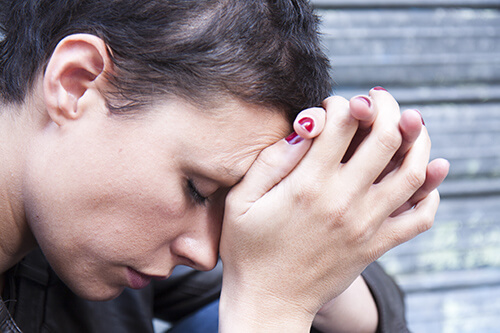Watching a friend or family member abuse drugs causes fear. In most cases, it makes people feel powerless. One drug that has a high potential for addiction is tramadol. Tramadol addiction was once something that doctors didn’t worry about, but new studies show otherwise.

What Is Tramadol?
First, it’s important for people to become familiar with this drug. Tramadol is a synthetic opiate that’s very similar to codeine. Like codeine, it treats moderate to severe pain in adults. It’s not uncommon for doctors to give people tramadol after back surgery.
Unlike natural opiates that come from milking an opium poppy plant, synthetic opiates come from labs. Researchers formulate products that have an identical chemical structure to that of natural opium. Some researchers argue, however, that synthetic opiates are more addictive than natural opiates.
Tramadol Addiction
In the 1990s, the U.S. Food and Drug Administration (FDA) approved tramadol. Like other pain relievers, the FDA knew that tramadol had addictive properties. However, the department first thought tramadol was less addictive than similar drugs on the market. It wasn’t until later that it found that it’s just as addictive, if not more, than other pain relievers.
The reason that tramadol is addictive is because it causes chemical changes in the brain. It binds to receptors in the brain to block pain signals. The drug also causes an increase in dopamine, which creates the high that people seek from opiates.
Ultram is a popular brand name for tramadol, and some of its street names include ultras and chill pills. The drug comes in the form of 50 to 100 milligram pills. Although it’s an oral medicine, people crush and snort it. Doctors say that no one should exceed 400 milligrams of tramadol in a single day.
Addiction Signs
Like most drugs, there are some very clear signs that people suffer from tramadol addiction. Unfortunately, many of these signs are the same as other drug addiction symptoms. It’s harder to figure out the culprit of addiction than it is to notice that people have an addiction.
Nearly 44 million people had tramadol prescriptions in 2013. Despite studies showing the addictive nature of this drug, these numbers are likely to grow. For this reason, family and friends have to stay on the lookout for signs and symptoms of tramadol addiction.
One common sign is the development of an intense craving for the drug. Another sign is doctor shopping, which is the process of searching for a doctor who will prescribe tramadol. Doctors don’t prescribe tramadol forever and eventually cut people off. To continue getting the drug, people have to shop around for doctors who they can trick into prescribing it.
One more sign is a decline in school or work performance. It’s not uncommon for people with addictions to fail to show up for work or school. People with addictions also lose interest in things that they used to enjoy.
Get Help for Tramadol Abuse at Pinnacle Peak Recovery
At Pinnacle Peak Recovery, we make it our mission to help both men and women overcome addiction. In fact, we provide custom drug addiction rehab plans that are gender specific. Some other programs and services that we offer include:
- Dual diagnosis treatment
- Individual and group therapy
- Inpatient rehab
- Intensive outpatient treatment
- Cognitive behavioral therapy
We also offer holistic treatment options for our clients, including meditation, yoga and tai chi. We provide animal therapy as a way to reduce stress and anxiety too.
Don’t take on tramadol addiction alone. Get the help and support that you need at Pinnacle Peak Recovery. Reach out to our friendly staff members at 866-377-4761 for more information.
